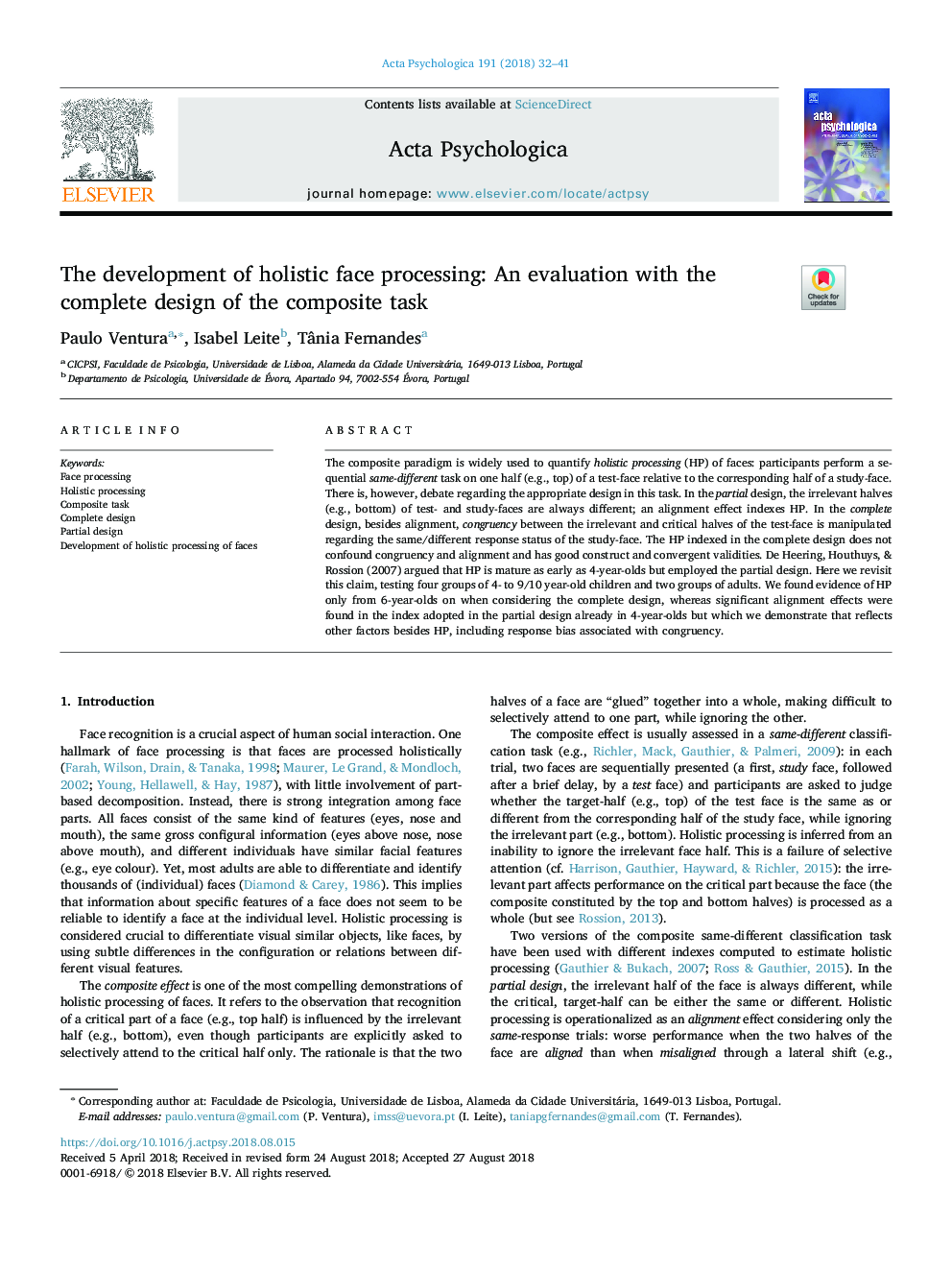| Article ID | Journal | Published Year | Pages | File Type |
|---|---|---|---|---|
| 8960708 | Acta Psychologica | 2018 | 10 Pages |
Abstract
The composite paradigm is widely used to quantify holistic processing (HP) of faces: participants perform a sequential same-different task on one half (e.g., top) of a test-face relative to the corresponding half of a study-face. There is, however, debate regarding the appropriate design in this task. In the partial design, the irrelevant halves (e.g., bottom) of test- and study-faces are always different; an alignment effect indexes HP. In the complete design, besides alignment, congruency between the irrelevant and critical halves of the test-face is manipulated regarding the same/different response status of the study-face. The HP indexed in the complete design does not confound congruency and alignment and has good construct and convergent validities. De Heering, Houthuys, & Rossion (2007) argued that HP is mature as early as 4-year-olds but employed the partial design. Here we revisit this claim, testing four groups of 4- to 9/10â¯year-old children and two groups of adults. We found evidence of HP only from 6-year-olds on when considering the complete design, whereas significant alignment effects were found in the index adopted in the partial design already in 4-year-olds but which we demonstrate that reflects other factors besides HP, including response bias associated with congruency.
Keywords
Related Topics
Life Sciences
Neuroscience
Cognitive Neuroscience
Authors
Paulo Ventura, Isabel Leite, Tânia Fernandes,
